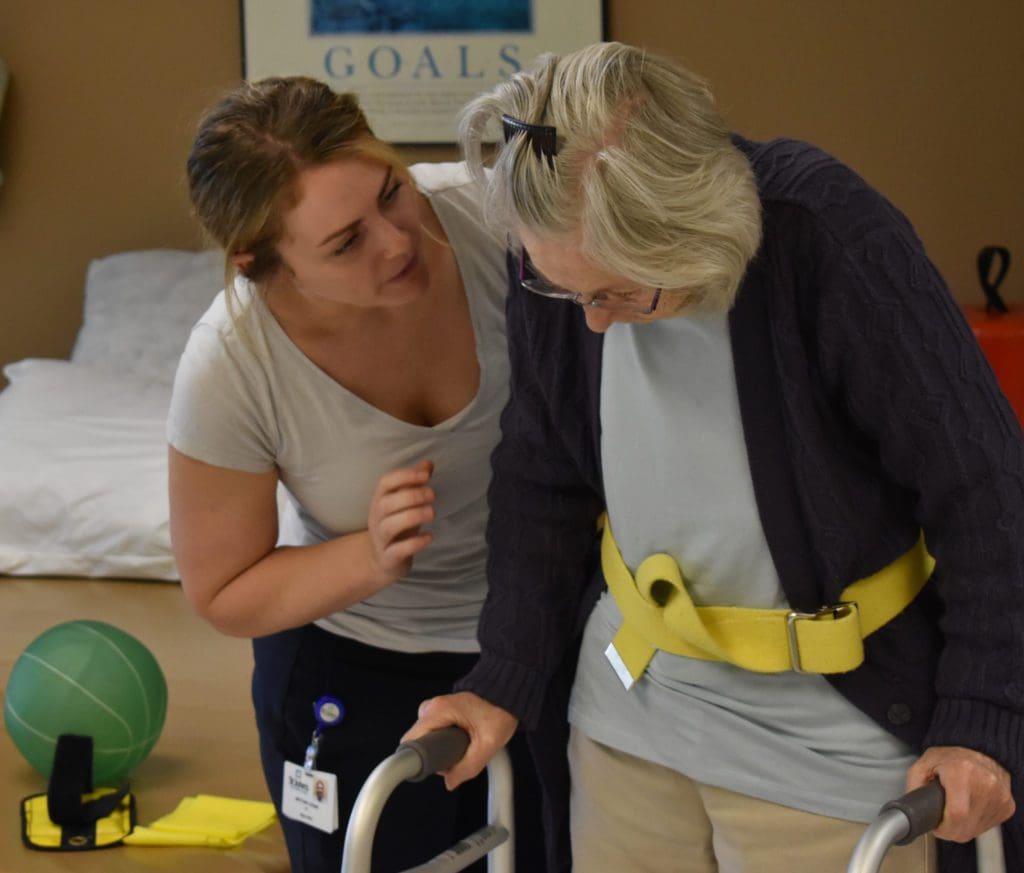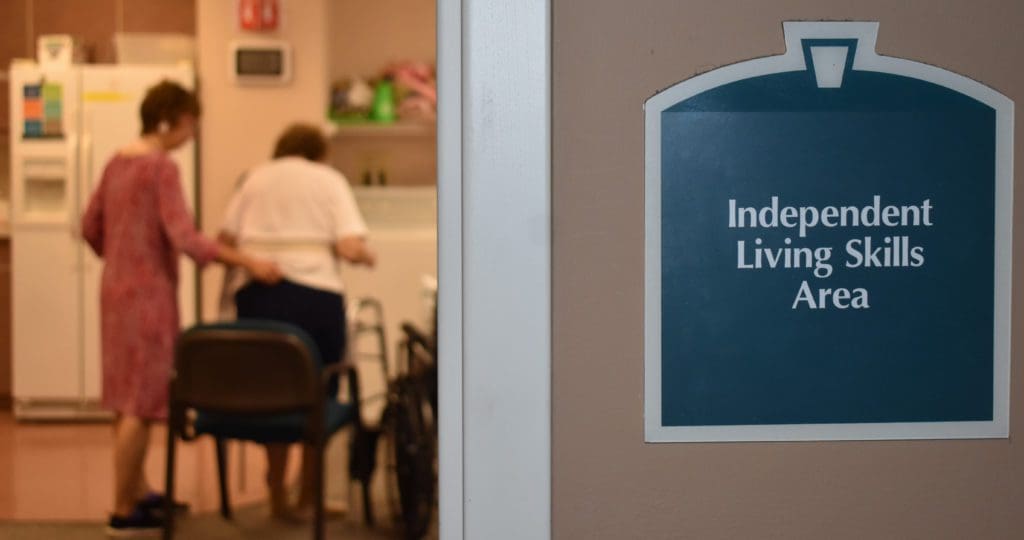Regaining Independence with Rehabilitation Services

Brittany Godin has worked with a variety of patients—both young and old—during her career as a physical therapist. For her, there is just something about working with older adults that stands out. “The resilience and drive of the senior population to improve,” says Brittany. “(They) really persevere to continue maintaining their level of independence.”
That drive to return home and preserve a high level of autonomy when they get there is often cited by therapists working with guests recuperating at the St. John’s Rehabilitation Center. Consider this common scenario for many short-term rehabilitation guests: an unexpected fall causes an injury that sends the person to the hospital, often leading to surgery. While still in the early stages of the recovery process, patients are discharged not to their own home, but to another unfamiliar setting for further therapy and support. “Sometimes a patient’s ability to go home and desire to be independent can seem out of reach,” explains Brittany. “However, that’s why we set goals, both short and long-term, so that there are benchmarks we can measure.”
Short-term rehabilitation provides a safe, supportive setting for those who are unable to immediately return home following an illness or surgical procedure. By choosing St. John’s Rehabilitation Center to continue their recovery, guests complete physical therapy sessions in the Rochester area’s largest rehab gym. The rehabilitation gym at St. John’s features a large set of stairs for rehab guests to practice stepping up and down based on their therapy progress. Additionally, there are several other inclines and surfaces that simulate situations both indoors and outdoors that a person must be able to master.
Physical therapy is just a part of the rehabilitation process. Occupational therapy—a specialized therapy that involves the performance of activities similar to tasks one would complete at home—is another crucial step in the road back to independence. Exercises test a person’s ability to complete household chores like cooking, laundry, and medication management.
Occupational therapy exercises not only mirror movements and tasks a person regularly must perform in everyday life, they can also help identify potential hazards at home. Certified occupational therapy assistant Karen Schillinger gives the example of having a guest practice putting on socks and other clothing and seeing difficulties that raise red flags. That information can then be taken back to the care team. “Sometimes I will see things that the PT (physical therapist) won’t,” says Karen. She emphasizes the importance of collaboration among the therapy team that includes physical, occupational, and speech therapists. If one of the therapists notes something that could put the patient in danger, that person communicates this to teammates who can then incorporate that task or skill in future therapy sessions.
As a result of this collaboration, clinical outcomes for St. John’s Rehabilitation Center patients show strong improvements in the types of categories that help guests safely navigate the home environment waiting for them. Improvement in mobility for those discharged home in 2018 increased by 133% based on Medicare’s standardized care tool. More recently, functional outcomes data showcases significant improvements in areas such as “Taking one step with a curb,” “Taking 12 steps with or without a rail,” and “Walking 10 feet on uneven surfaces.”
When they are not attending therapy, the day-to-day needs of guests are met by compassionate caregivers. St. John’s realizes that prospective rehabilitation guests have a choice as to where they bridge the gap between hospital and home. That is why St. John’s has implemented a hospitality approach to rehabilitation services with each patient’s comfort in mind. Upcoming modernization updates will bring even greater improvements to the rehabilitation gym while enhancements and new SMART technologies will make guests feel more comfortable and connected in the rooms.
One of the most rewarding parts of the job for our rehabilitation therapists is seeing these guests come to St. John’s facing a difficult road to recovery and then putting in the work to achieve their goals. “They (rehab guests) inspire me with how hard they will work,” says Karen. “Many of them take real ownership over their therapy and will be as much a part of the process as they can.”
From the physical therapy end, Brittany agrees. “Seeing a patient from day 1 to their last day and knowing all the barriers and obstacles they have overcome—being a part of that process—is really gratifying and why I love what I do.”

